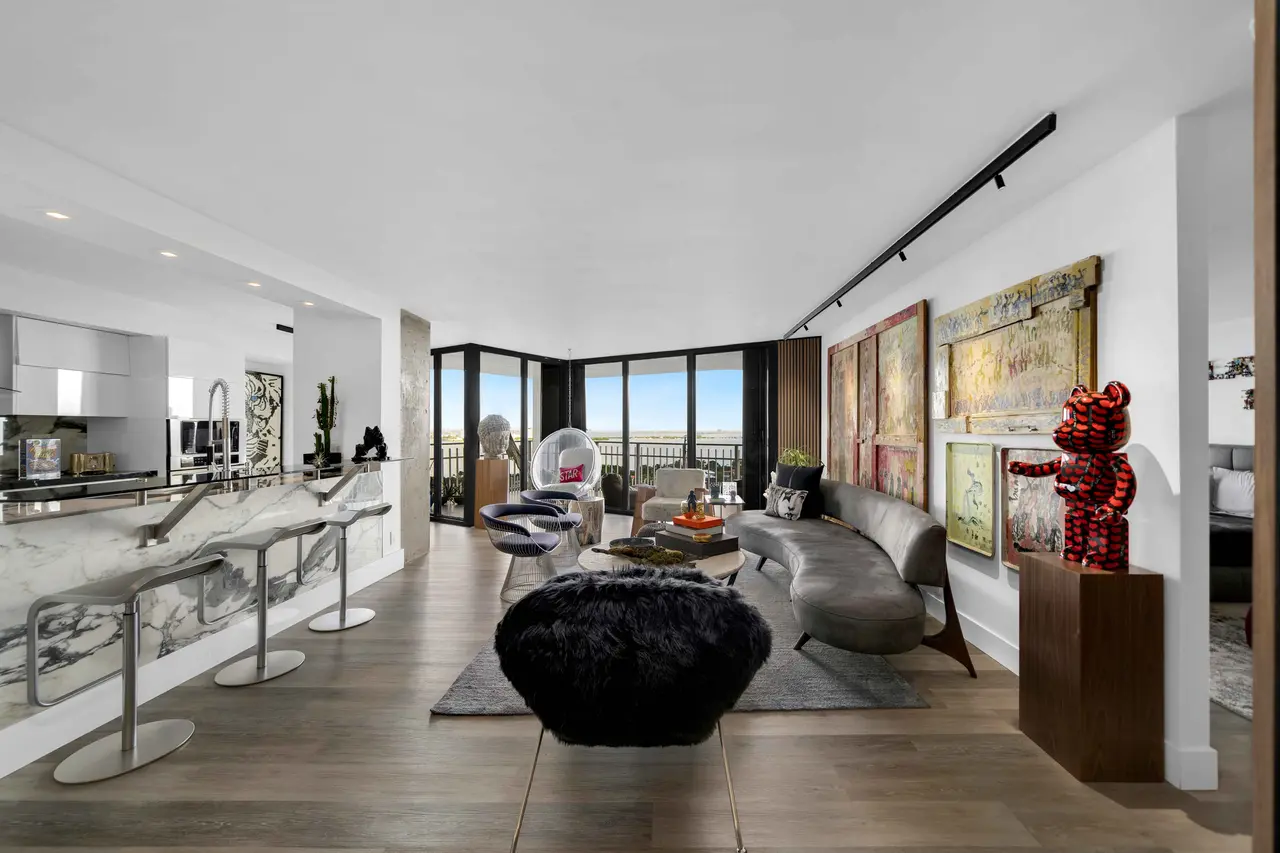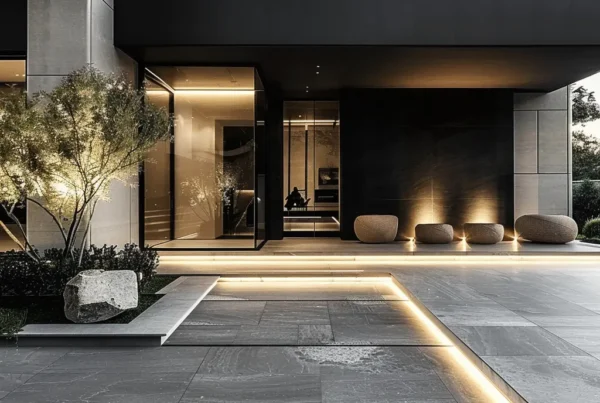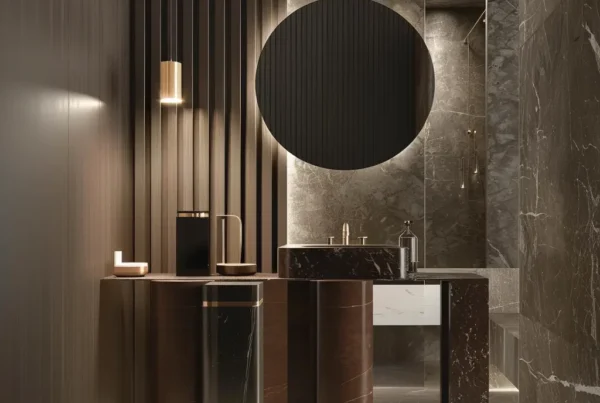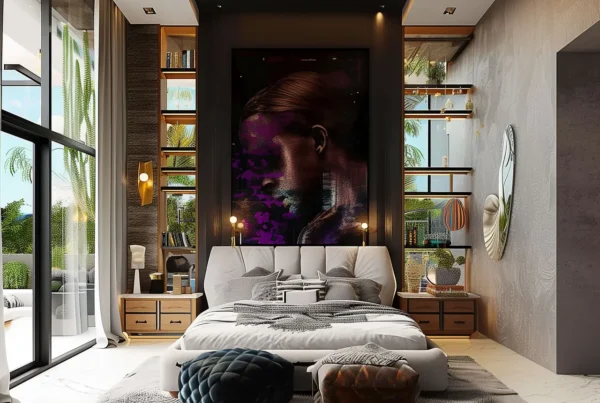1. Unlocking the Potential of Every Corner
When it comes to creative spaces design in Miami, every inch counts. Small spaces offer unique opportunities to showcase your creativity and maximize functionality. One key tip is to utilize vertical space effectively. Install shelves or wall-mounted storage to free up floor space and create a visually appealing display. By looking at every corner as a potential design feature, you can transform even the smallest nooks into functional areas.
Another essential aspect of optimizing small spaces is choosing furniture that serves multiple purposes. Consider a sofa bed for the living room or a dining table that can be folded away after meals. This way, you can maintain a sense of spaciousness while still having all the necessary amenities. By thinking outside the box, you can unlock the potential of every corner and create a truly innovative living space.
Mirrors are your best friend when it comes to expanding the visual space of a room. Placing mirrors strategically can reflect light, making the room appear larger and more open. In addition to mirrors, opt for glass furniture to maintain an airy feel. Glass coffee tables or transparent chairs can give an illusion of space and contribute to a modern aesthetic. Embrace these tricks to open up your small space and make it feel more expansive.
2. Embracing Minimalism with a Splash of Creativity
Minimalism and creative spaces design go hand in hand when it comes to maximizing small areas. Simplifying your decor can create a sense of openness and tranquility. Choose a neutral color palette to visually expand the space and add pops of color through accent pieces or artwork. By decluttering and keeping only essential items, you can maintain a clean and organized environment.
Don’t be afraid to infuse your space with unique and personal touches. Incorporate statement pieces that reflect your personality and style. Whether it’s a bold rug, a quirky light fixture, or a custom-made shelving unit, these elements can add character without overwhelming the space. Embracing minimalism doesn’t mean sacrificing creativity – it’s about finding the perfect balance between simplicity and self-expression.
When arranging furniture in a small room, think about traffic flow and functionality. Opt for open shelving instead of bulky cabinets to keep the space airy. Position your furniture strategically to define different areas within the room without disrupting the overall flow. By embracing a minimalist mindset and infusing creativity into your design choices, you can achieve a harmonious balance in your small space.
3. Strategic Furniture Placement for Space Optimization
Strategic furniture placement is crucial when it comes to optimizing small spaces in Miami. Start by measuring your space and selecting furniture that fits proportionally. Consider multi-functional pieces that can adapt to various uses, such as nesting tables or storage ottomans. By arranging your furniture to create clear pathways and open sightlines, you can prevent the room from feeling cramped and maximize the available space.
When furnishing a small bedroom, choose a bed with built-in storage or elevate it on risers to create extra room underneath. Incorporate wall-mounted sconces instead of table lamps to free up bedside surface space. Utilize the vertical space by installing floating shelves or a compact desk. These small adjustments can make a big difference in how functional and spacious your bedroom feels.
4. Playing with Light and Color to Expand Rooms Visually
Light and color play a crucial role in visually expanding rooms, especially in small spaces. Opt for light, neutral tones on walls and ceilings to reflect natural light and make the space feel larger. Introduce pops of color through textiles, throw pillows, or artwork to inject personality and brightness into the room. Additionally, consider adjustable lighting options like dimmer switches or task lighting to create different ambiance levels based on your needs.
Natural light is a valuable asset in small spaces, so make the most of it by keeping window treatments minimal. Choose sheer curtains or blinds that allow light to filter through while maintaining privacy. If privacy isn’t a concern, leave windows bare to maximize sunlight exposure. Incorporate mirrors near windows to bounce light around the room and create a sense of airiness. With the right combination of light and color, you can transform a small room into a bright and inviting space.
In addition to natural light, artificial lighting can enhance the ambiance of small spaces. Experiment with different types of lighting fixtures, such as pendant lights, wall sconces, or floor lamps, to create layers of light and add depth to the room. Task lighting in work areas like the kitchen or home office is essential for productivity and comfort. By playing with light sources and color palettes, you can elevate the visual appeal of your small space and make it more inviting.
5. Innovative Storage Solutions to Declutter and Organize
Storage is a top priority in small space design, and innovative solutions are key to decluttering and organizing effectively. Look for furniture with hidden storage compartments, such as ottomans with lift-up tops or beds with drawers underneath. Maximize closet space with modular shelving systems or hanging organizers. Utilize vertical storage options like tall bookcases or wall-mounted racks to keep items off the floor and create a streamlined look.
Think outside the box when it comes to storage solutions. Consider incorporating storage benches that double as seating in the entryway or bedroom. Install pegboards in the kitchen or home office to hang tools, accessories, or office supplies. Use under-bed storage boxes for seasonal clothing or extra linens. By combining functionality with clever design, you can make the most of every inch in your small space.
When it comes to organizing small spaces, it’s essential to edit your belongings regularly. Donate or sell items you no longer need and keep only what’s practical and meaningful to you. Invest in versatile pieces like nesting tables or stacking bins that can adapt to your changing storage needs. By implementing these innovative storage solutions, you can maintain a clutter-free environment and enjoy a more organized living space.
6. Vertical Gardens: Bringing Greenery Indoors for a Fresh Look
Bringing a touch of nature into your small space can enhance its aesthetics and create a refreshing atmosphere. Vertical gardens are a creative way to incorporate greenery indoors without taking up valuable floor space. Install a living wall or hang potted plants at different heights to add texture and color to your walls. Plant herbs in a kitchen garden or create a mini oasis with a selection of houseplants. By embracing vertical gardens, you can bring life and energy into your small space.
In addition to aesthetic appeal, indoor plants offer health benefits by purifying the air and reducing stress levels. Choose low-maintenance plants like succulents or pothos that thrive in indoor environments with minimal care. Group plants together to create a lush display or place them strategically near windows to benefit from natural light. Whether you have a green thumb or are new to gardening, incorporating vertical gardens can transform your small space into a vibrant and inviting sanctuary.
7. Multi-Functional Furniture: Beauty Meets Practicality
Multi-functional furniture is a game-changer when it comes to small space living in Miami. Invest in pieces that serve dual purposes, such as a Murphy bed that converts into a desk or a storage ottoman that doubles as a coffee table. Choose furniture with hidden compartments or built-in functionality to maximize space efficiency. With multi-functional pieces, you can enjoy the best of both worlds – beauty and practicality – in your small space.
Consider investing in modular furniture that can adapt to different needs and configurations. Modular sofas with movable components allow you to customize the seating arrangement based on the occasion. Expandable dining tables can accommodate extra guests when needed and be compact for daily use. By selecting multi-functional furniture that aligns with your lifestyle, you can create a versatile and dynamic living environment in your small space.
8. Illusions of Space: Mirrors, Glass, and Beyond
Creating illusions of space is a design trick that can visually expand your small rooms. Mirrors are a classic tool for making a room feel larger by reflecting light and creating depth. Place mirrors opposite windows to amplify natural light and bring the outdoors inside. Consider mirrored furniture like dressers or bedside tables to add glamour and sophistication while maximizing perceived space.
Glass is another material that can create a sense of openness and airiness in small spaces. Opt for glass coffee tables, transparent dining chairs, or acrylic accent pieces to maintain a light and modern aesthetic. Glass partitions or doors can separate spaces without closing them off entirely, preserving a sense of connectedness. By incorporating mirrors, glass, and other reflective surfaces, you can play with visual tricks to enhance the spacious feel of your small space.
9. Artistic Accents: Personalizing Your Small Space with Style
Personalizing your small space with artistic accents is a fun way to showcase your creativity and style. Choose artwork that speaks to you and complements the overall aesthetic of the room. Display family photos, travel souvenirs, or handmade crafts to add a personal touch. Consider creating a gallery wall with a mix of framed prints and paintings to make a statement and infuse character into the space.
Incorporate textiles like throw rugs, cushions, or curtains to introduce texture and warmth. Opt for unique accessories like sculptural vases, decorative bowls, or handmade ceramics to elevate your decor. Mix and match patterns, colors, and materials to create visual interest and reflect your personality. Embrace artistic accents as a way to tell your story and make your small space truly your own.
10. Creative Ways to Define Zones within Limited Space
In small spaces, defining zones is essential to creating distinct areas for different activities without sacrificing the overall flow. Use rugs to delineate seating areas in the living room or dining zones in the kitchen. Position furniture strategically to separate the sleeping area from the workspace in a studio apartment. Consider room dividers like open shelves, sliding doors, or curtains to partition spaces while maintaining an open feel.
Create visual boundaries using lighting techniques. Install pendant lights over the dining table to highlight the area and create a cozy ambiance. Use floor lamps to illuminate reading nooks or accent corners. Play with different light intensities to differentiate between zones and set the mood accordingly. By combining furniture arrangement, decorative elements, and lighting strategies, you can define zones creatively in your limited space.




